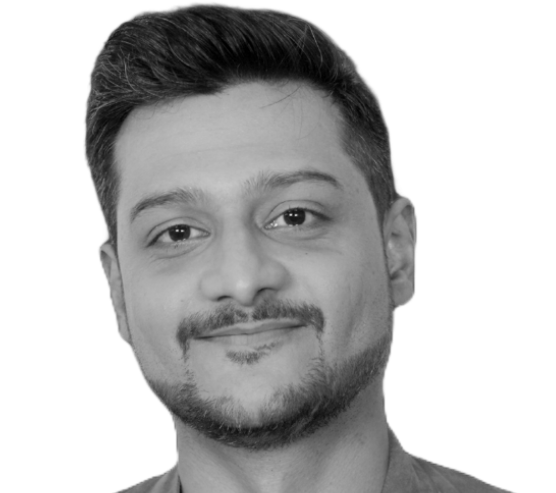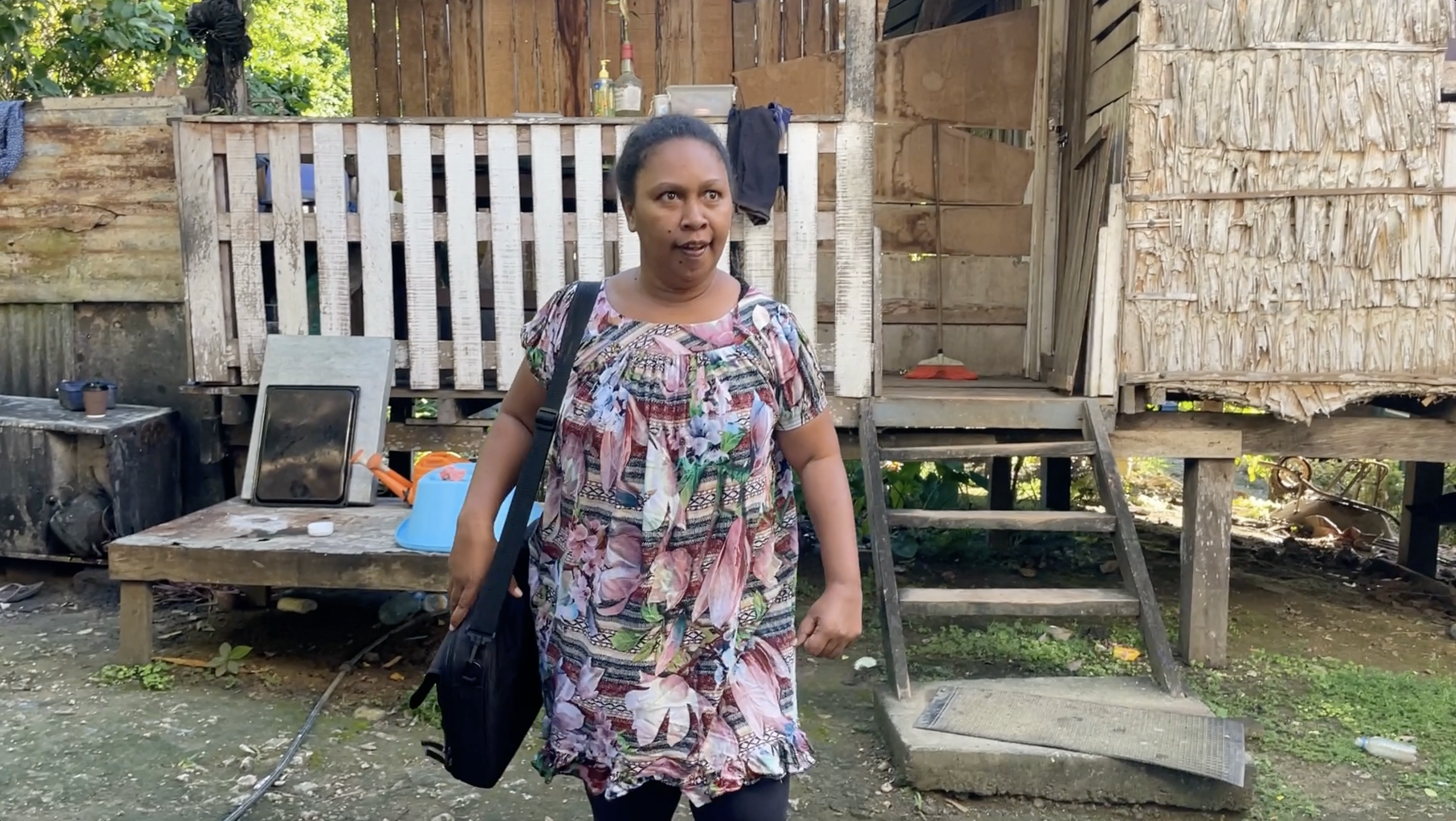Transcript for Climate Isn’t Equal
Audio description: An Indian man wearing a beanie and navy sweatshirt on a red bench in a park speaking to the camera.
Pranav: Most of the neurodiverse people are surviving and not living, and I genuinely feel the same. See for neurodiverse people, every day is a survival.
Audio description: An aerial view of Delhi, a densely populated city covered in smog.
Audio description: Text on screen: Pranav Sethi is a 34-year-old autistic disaster risk reduction professional.
[soft acoustic music throughout]
Text continues: He is vocal about climate change and its effects on disabled and neurodivergent people.
Audio description: Pranav sits indoors looking at a laptop,
Pranav: I mean I personally have seen the impact of climate change.
Audio description: Pranav walks down a street with parked cars and buildings on either side.
Pranav: Because of my special interest and because it’s slow.
Audio description: Three smokestacks emit smoke into the sky,
Pranav: Like, you know, it’s not a sudden change. It’s a process. Like you know, it’s a very slow process.
Audio description: Pranva walks through a smog-filled park with trees and benches.
Pranav: The moment you land in Delhi you know you can have as many uh air purifiers as you like.
Audio description: A plane lands on a runway in heavy smog. Passengers disembark and walk through the haze.
Pranav: They are not going to do anything because you cannot seal your home. Winters are here.
Audio description: A car drives through dense fog and smog. Streetlights shine through dense pollution.
Pranav: Smog is at its peak. As you can see, like, you know, most of us are coughing. It’s a lot of smog.
Audio description: Text on screen: Climate change makes smog worse by increasing heat and sunlight.
This speeds up the chemical reaction between pollution from power plants, cars and factories.
Text continues: More ozone forms, leading to dirtier air and more health problems.
Pranav: You find it difficult to breathe. You find it difficult to like, you know, drive.
Audio description: Prav drives a car.
Pranav: During winters it is like that – that all the air will kind of accumulate over the northern plains.
Audio description: Cars drive on a highway through dense smog. A hazy aerial view of Delhi, buildings and traffic,
barely visible.
Pranav: And we are in the middle of it so you know we end up suffering.
Pranav’s wife Shivani: And we are just no ready to face the changes that are happening these days.
Audio description: Pranav is joined by his wife, Shivani. They sit together on a red bench in a park. Shivani wears light pink jeans and a beige hoodie with yellow
trim.
Text on screen: Shivani Chandel, government schoolteacher, Pranav’s wife.
Shivani: I mean the pollution for one, the like natural disasters being more frequent.
Pranav: Like, I’ve seen people in the middle of such crisis.
Audio description: The Red Fort in Delhi crowded with tourists and layered in smog.
Pranav: After coming out of it they still are not able to acknowledge the fact that you know it’s because of climate change.
Audio description: Pranav stands in a park covered with fallen leaves. Wearing sandals, he shuffles his feet through the leaves.
Pranav: They will think of any random, obscure, um like, you know, reason but not climate change.
Audio description: A drive-by view of people walking on a busy street in Delhi, wrapped in shawls. A wide view of a smoggy landscape with a river and birds flying overhead.
Pranav: That is how bad the thing is.
Audio description: An aerial view of Indian women wearing colorful saris walking in a line through a dry landscape, carrying large pots of water atop their heads.
Text screen: While 82% of people in India acknowledge that global warming is happening, only 54% believe it is primarily caused by human activities.
Source: Yale climate opinion maps for India 2024
Text continues: the rest attribute it to mostly natural changes in the environment.
Shivani: And given like how uneducated a majority of our population is they think that, “Okay, we’re just a minuscule part of this big, big population of India.
Audio description: A woman arranges garlands in her shop. Two women carry pots of water on their heads.
Shivani: And anything we do will not make any difference.
Audio description: Time-lapse showing the Red Fort in Delhi, crowded with tourists and shrouded in haze.
Shivani: They cannot be worried because they have so much to worry about, like what they’re going to have next in their meal, if they’re going to have enough clothes to wear for the winters.
Like, I think a mindboggling uh sum of people are uneducated.
Audio description: A woman sells vegetables at a market store.
And they just don’t they don’t know about it, so they they can’t care about it.
Audio description: A crowded, polluted street in Delhi, with overhead wires.
And if they know about it, they still can’t care about it because they have like very immediate issues that they have to cater to. That’s how I feel.
Pranav: You know people are busy with their own life to an extent where they don’t even know that they don’t even know the climate is changing.
Audio description: An aerial view showing cars and people on the street, another overhead view of Delhi with a train running down the center.
Pranav: And they have started to accept this as the new normal. People are believing that this is how it is now.
Audio description: A small boat with people on a smoggy river, birds flying overhead.
Pranav: It was never the case earlier, like 20 25 years back. That was never the case, but now it is becoming a big issue, so like I mean, this should never be considered as normal. This is not normal.
Audio description: A crowded time-lapse of cars and people on the street. Text on screen: As climate change intensifies, inclusive action is more critical than ever. People with disabilities are among those most affected, often facing higher risks during climate-related disasters and limited access to resources for adaptation.
Text on screen: India’s updated climate goals under the Paris Agreement focus on making climate action fair and inclusive, cutting carbon emissions per unit of GDP [gross domestic product] by 45% by 2030 compared to 2005, with solutions that everyone, including disabled communities, can access.
Text continues: Growing forests and tree cover to absorb 2.5 to 3 billion tons of CO2 by 2030 with diverse communities taking part.
Text continues: Increasing funding for climate programs that support vulnerable groups, particularly persons with disabilities, across sectors such as agriculture, water resources, the Himalayan region, coastal
regions, health, and disaster management.
Text continues: This inclusive update to India’s nationally determined contribution [NDC] marks a significant step toward India’s long-term goal of achieving net-zero emissions by 2070.
The Disability Justice Project logo, featuring a bright yellow letter D with a triangular play button in the center, appears on a black background.






